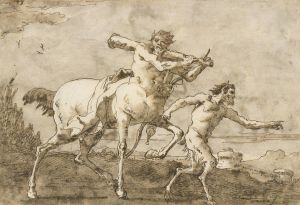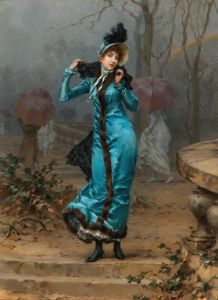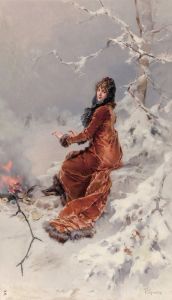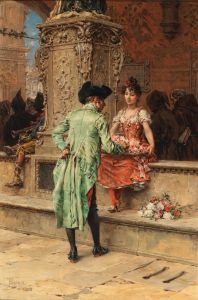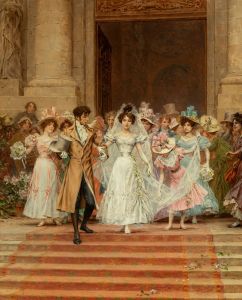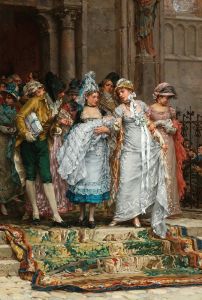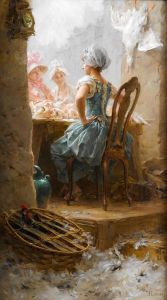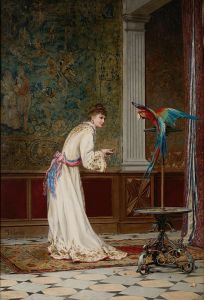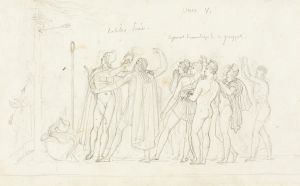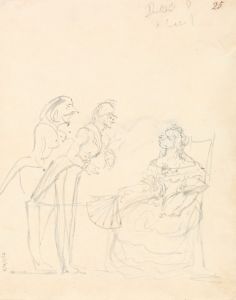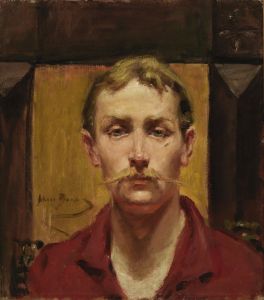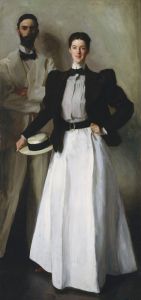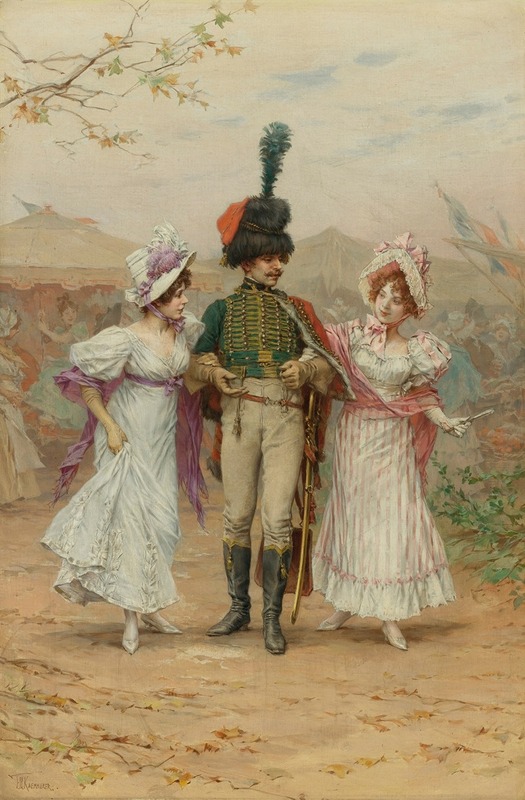
Two Strings To His Bow
A hand-painted replica of Frederik Hendrik Kaemmerer’s masterpiece Two Strings To His Bow, meticulously crafted by professional artists to capture the true essence of the original. Each piece is created with museum-quality canvas and rare mineral pigments, carefully painted by experienced artists with delicate brushstrokes and rich, layered colors to perfectly recreate the texture of the original artwork. Unlike machine-printed reproductions, this hand-painted version brings the painting to life, infused with the artist’s emotions and skill in every stroke. Whether for personal collection or home decoration, it instantly elevates the artistic atmosphere of any space.
Frederik Hendrik Kaemmerer was a Dutch painter born on October 23, 1839, in The Hague, Netherlands. He was known for his genre scenes, portraits, and historical subjects, often characterized by their detailed execution and vibrant color palette. Kaemmerer studied at the Royal Academy of Art in The Hague and later moved to Paris, where he became associated with the French academic style. He was influenced by the works of the French academic painters and became a part of the Parisian art scene, exhibiting regularly at the Salon.
"Two Strings To His Bow" is one of Kaemmerer's notable works, although specific details about the painting, such as its creation date or current location, are not widely documented. The title itself suggests a theme of duality or versatility, possibly depicting a scene where a character has multiple options or strategies at their disposal. This phrase, "two strings to his bow," is an idiom that means having more than one plan or means of achieving a goal.
Kaemmerer's work often depicted scenes from the 18th century, capturing the elegance and charm of that period. His paintings are known for their meticulous attention to detail, capturing the textures of fabrics and the subtleties of light and shadow. This attention to detail and historical accuracy made his works popular among collectors and art enthusiasts of his time.
In his career, Kaemmerer received several accolades, including medals at the Paris Salon, which was a significant achievement for any artist of that era. His ability to blend Dutch realism with French academic techniques allowed him to create works that were both technically proficient and visually appealing.
Kaemmerer's paintings often reflect a narrative quality, inviting viewers to engage with the story being depicted. This narrative aspect, combined with his technical skill, made his works stand out in the competitive art world of the 19th century. His ability to convey emotion and character through his paintings contributed to his reputation as a skilled genre painter.
Despite his success, Kaemmerer's life ended tragically when he died by suicide on April 4, 1902, in Paris. His contributions to art, however, continue to be appreciated, and his works are held in various collections, both public and private.
While specific information about "Two Strings To His Bow" is limited, Kaemmerer's overall body of work remains a testament to his skill and artistic vision. His paintings continue to be studied and admired for their beauty and historical significance, offering insight into the cultural and artistic milieu of the 19th century.







